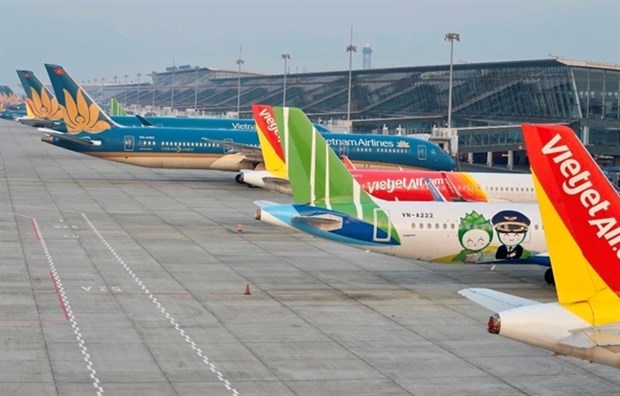Airlines ready to capitalise on rising travel demand as China reopens borders
Vietnam’s aviation industry is forecast to have a busy year ahead as China reopens its borders which had been shut down since the start of the COVID-19 pandemic.
Domestic airlines are re-operating regular routes to/from China and planning to increase the frequency and open new routes.
A representative from Vietnam Airlines said that the national flag carrier was getting ready to re-operate regular routes between Vietnam and China. Besides resuming flight routes to/from China, it was also developing plans to increase the frequency and launch new ones depending on the market demand as well as visa and entry policies.
The air travel market will recover as China moves to ease its tight COVID-19 regimes.
According to Vietnam Airlines, the number of bookings has been increasing since the reoperation of flight routes on December 9.
Airlines expect to serve visitors, international workers, and official guests in the next two months. Vietnam Airlines said that Chinese tourists are expected to come from March, which would help increase travelling to 50% in 2019.
However, an obstacle was that the two countries had not yet made specific announcements on the issuance of tourist visas, the airline said, adding that resolving this issue was what both sides were expecting to promote the restoration of flight routes to the same level as in 2019.
Flight No VN502, departing from HCM City for Guangzhou on December 9, was the first commercial regular flight between the two countries after nearly three years of stopping because of the COVID-19 pandemic.
By January 8, Vietnam Airlines restored all routes between Hanoi and Nanjing/ Shanghai and between HCM City and Shenzhen/Hangzhou/Shanghai/Sichuan and Guangzhou with a frequency of six weekly flights.
With the resumption of regular flights to China, Vietnam Airlines restored most of its international flight network, bringing the total number of international flights it operated to more than 600 a week, equivalent to 70% of the frequency in the pre-pandemic period.
From March, the airline would increase frequency to Shanghai, Beijing and Guangzhou.
Vietjet resumed flight routes from HCM City to Shenzhen/ Hangzhou/ Shanghai/ Sichuan/ Wuhan with six weekly flights. From January 23, the airline would put more routes into operation, including from Cam Ranh to Changsha and Chengdu.
Pacific Airlines was operating routes from Hanoi to Hangzhou/ Nanning with a frequency of two weekly flights and planned to open routes to Guangzhou and Fuzhou this summer.
Bamboo Airways was operating the route from Hanoi to Tianjin with one flight per week and planned to open six new routes to China.
Vietravel Airlines had no routes to China but planned to launch charter flights from Cam Rank and Da Nang to Hangzhou.
The Civil Aviation Authority of Vietnam (CAAV) said that airlines were allowed to resume regular flights with the frequency specified in the bilateral aviation agreements. Airlines were also allowed to resume flights as before the COVID-19 pandemic, using the history of slots.
CAAV said that the Vietnam–China aviation market could hardly recover as before the pandemic in the short term.
CAAV stressed that the tourist visa policies of Vietnam and China were important to promote air travelling because visitors between the two countries were mainly tourists. CAA said that airlines were expecting appropriate tourist visa policies to attract Chinese tourists.
China was the largest tourism market of Vietnam in the pre-pandemic period, with 5.8 million visitors in 2019, accounting for nearly one-third of international arrivals. In the 2015-19 period, the number of Chinese tourists to Vietnam rose by 3.3 times. China was also the leading outbound destination of locals, with around 4.5 million Vietnamese travelling to China a year.
CAAV also urged airlines to meet with airports in advance to ensure the stability and smoothness for the restoration and operation of international flights, as some airports in China might not be able to provide the full range of required services.

